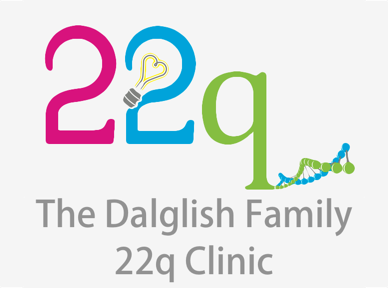Information for Educators
Disclaimer: The following information pages are provided for educational purposes only. They are not intended to be taken as medical, instructional, or career advice. If you have questions or concerns, please discuss them with your doctor, healthcare provider, or school representatives.
Understanding 22q11.2 deletion syndrome
A person with 22q11.2 Deletion Syndrome (22q11.2DS) is missing a section of DNA in region 11.2 of chromosome 22. This deletion is found in about 1 in every 2148 newborns. During the production of the eggs in the mother or sperm in the father, a piece of DNA in chromosome 22 is lost, i.e. gets deleted. This event happens because of the special structure of this region of the human genome. When the affected egg or sperm forms part of a fertilized egg, there is missing DNA at section 11.2 on one of the pair of chromosome 22’s. The other chromosome 22 in the fertilized egg is intact, i.e. has this missing piece. Since all of the baby’s cells come from the same fertilized egg, all of the cells in the body have one chromosome 22 with the deletion and one without the deletion.
For explanations of genetic terms related to 22q11.2DS, please see our What is 22q11.2DS? Genetics Questions & Answers page.
People with 22q11.2DS are missing genes that code for proteins. Scientists are still trying to answer how the absence of these genes and the effects of this contribute to the host of health problems that can be seen in 22q11.2DS.
There are many possible features of 22q11.2DS. Even when individuals share the same deletion segment, they often do not share features. An explanation of common features can be found on our Symptoms and Treatments page.
Because the deletion is present in every cell of the human body, there are no gene therapies currently available to “fix” 22q11.2DS. Nevertheless, a variety of surgeries, medical treatments, and therapies can help with most of the health problems associated with 22q11.2DS.
Individuals with 22q11.2DS who wish to start a family are advised that each of their children will have a 50/50 chance of inheriting 22q11.2DS. This is because half of their eggs / sperm have the intact chromosome 22, while the other half have the chromosome 22 with the deletion. Up-to-date genetic counselling is strongly recommended for patients before starting a family.
